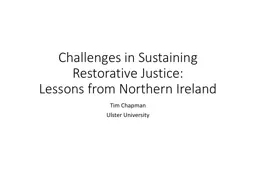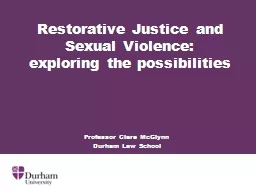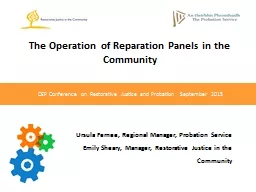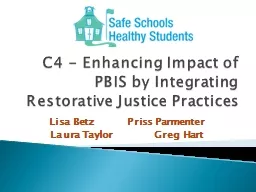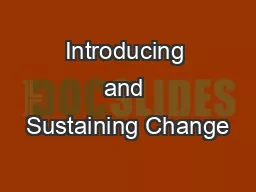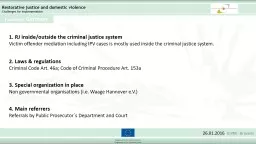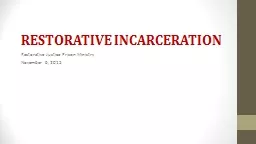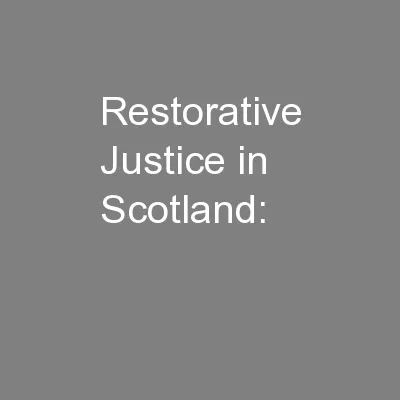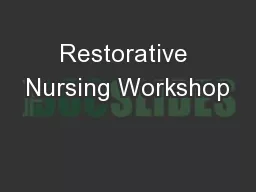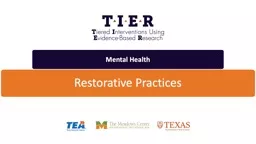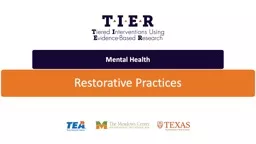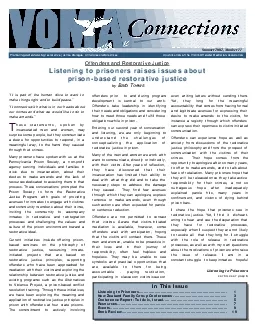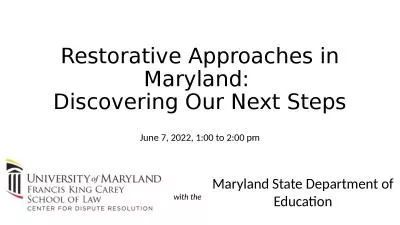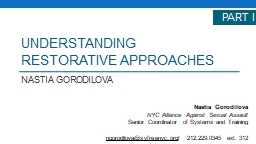PPT-Challenges in Sustaining Restorative Justice:
Author : danika-pritchard | Published Date : 2018-11-02
Lessons from Northern Ireland Tim Chapman Ulster University Restorative justice in Northern Ireland origins Northern Ireland set up The 2002 law makes restorative
Presentation Embed Code
Download Presentation
Download Presentation The PPT/PDF document "Challenges in Sustaining Restorative Jus..." is the property of its rightful owner. Permission is granted to download and print the materials on this website for personal, non-commercial use only, and to display it on your personal computer provided you do not modify the materials and that you retain all copyright notices contained in the materials. By downloading content from our website, you accept the terms of this agreement.
Challenges in Sustaining Restorative Justice:: Transcript
Download Rules Of Document
"Challenges in Sustaining Restorative Justice:"The content belongs to its owner. You may download and print it for personal use, without modification, and keep all copyright notices. By downloading, you agree to these terms.
Related Documents

